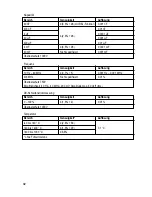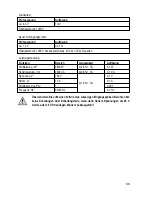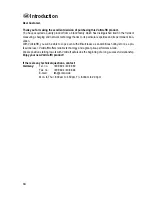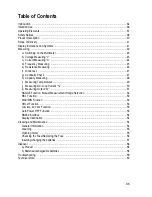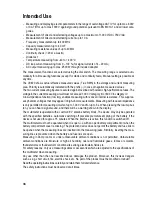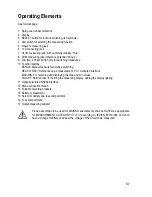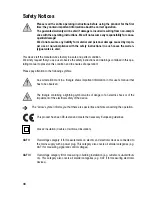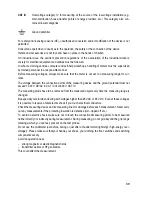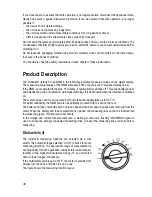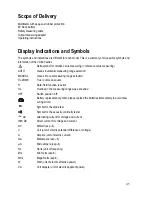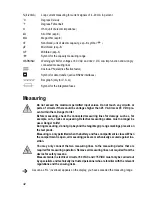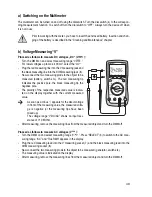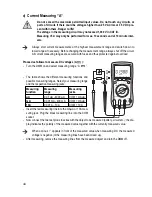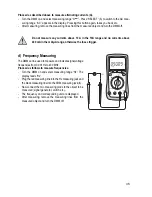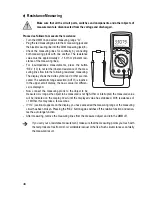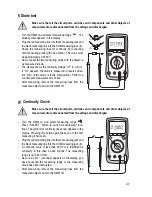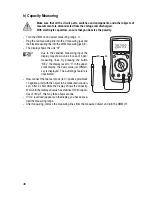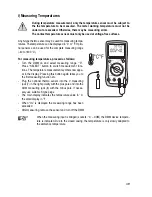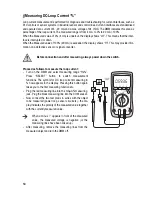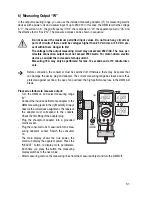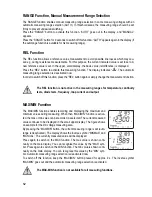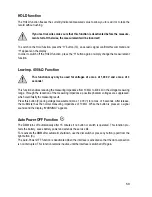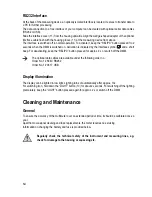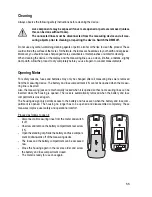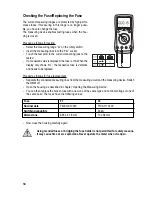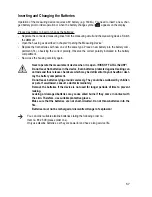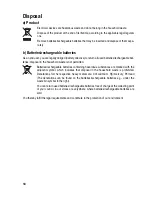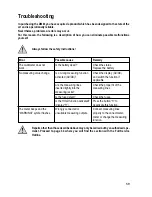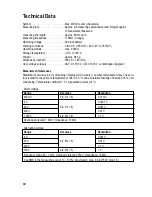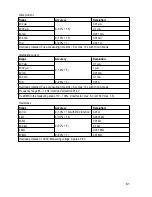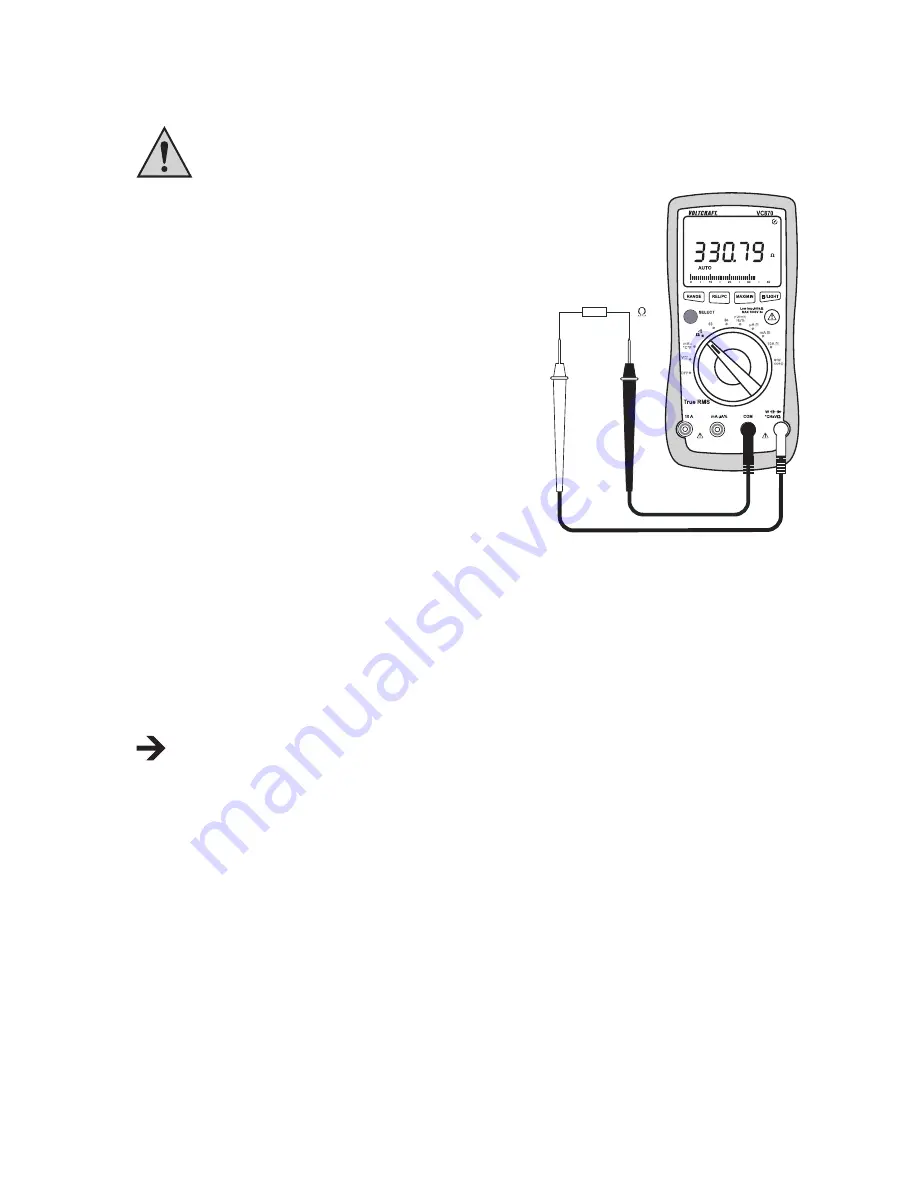
46
e) Resistance Measuring
Make sure that all the circuit parts, switches and components and other objects of
measurement are disconnected from the voltage and discharged.
Proceed as follows to measure the resistance:
-
Turn the DMM on and select measuring range “Ω ”.
-
Plug the red measuring line into the Ω measuring jack and
the black measuring line into the COM measuring jack (8) .
-
Check the measuring lines for continuity by connecting
both measuring prods with one another. The resistance
value must be approximately 0 - 1.5 Ohm (inherent resi-
stance of the measuring lines).
-
For low-impedance measurements, press the button
“REL” (10) to not let the inherent resistance of the mea-
suring lines flow into the following resistance measuring.
The display shows the delta symbol and 0 Ohm are indi-
cated. The automatic range selection (AUTO) is inactive.
In the upper, small display, the basic value (rel differen-
ce) is displayed.
-
Now connect the measuring prods to the object to be
measured. As long as the object to be measured is not high-Ohm or interrupted, the measured value
will be indicated on the display. Wait until the displayed value has stabilised. With resistances of
>1 MOhm, this may take a few seconds.
-
If “OL” (overload) appears on the display, you have exceeded the measuring range or the measuring
circuit has been broken. Pressing the “REL” button again switches off the relative function and activa-
tes the auto range function.
-
After measuring, remove the measuring lines from the measured object and turn the DMM off.
If you carry out a resistance measurement, make sure that the measuring points you touch with
the test prods are free from dirt, oil, solderable lacquer or the like. Such circumstances can falsify
the measured result.
Содержание VC870
Страница 3: ...3 ...
Страница 125: ...125 ...

